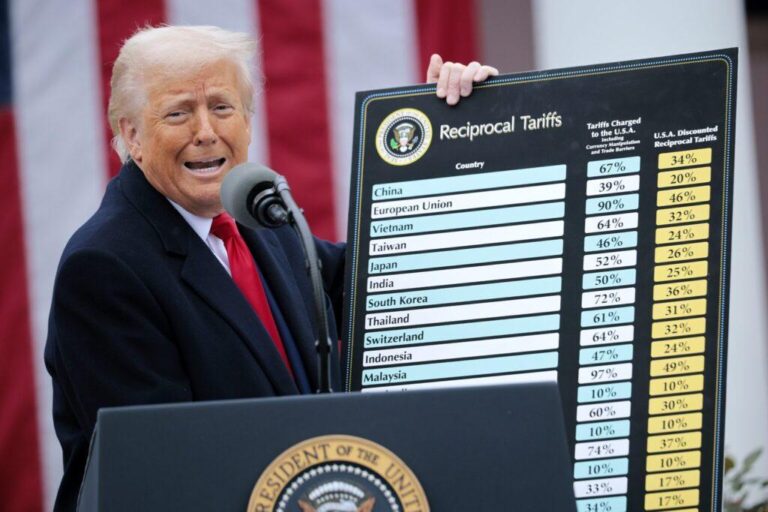Administration Plans to Relax Auto Import Tariffs Amid Industry Pushback
Facing increasing demands from automotive sector leaders, the Trump administration is reportedly preparing to reduce tariffs on imported vehicles. This anticipated policy revision signals a notable departure from previous protectionist measures, aiming to ease financial burdens on manufacturers and consumers alike. The adjustment reflects the growing clout of industry advocates who argue that earlier tariffs have escalated costs and disrupted supply chains within the U.S. auto market.
Primary reasons driving this policy reconsideration include:
- Escalating vehicle prices limiting consumer purchasing power
- Supply chain vulnerabilities caused by high tariffs on parts
- Calls from industry for a more nuanced and strategic tariff framework
- Desire to sustain U.S. market competitiveness without hindering innovation
| Tariff Type | Existing Rate | Proposed Rate | Industry Impact |
|---|---|---|---|
| Imported Vehicles | 25% | 10% | Lower prices for foreign-made cars |
| Automotive Components | 15% | 5% | Improved parts availability and cost reduction |
| Electric Vehicles (EVs) | 20% | 12% | Encourages expansion of green vehicle technologies |
Trade Policy Shift and Its Economic Repercussions: Domestic and International Perspectives
The easing of auto tariffs represents a pivotal change in trade policy with extensive implications for both U.S. manufacturers and global markets. For domestic automakers, reduced tariffs on imported parts and vehicles are expected to decrease production expenses, enhancing profit margins and enabling more competitive pricing without abrupt cost hikes. Consumers may benefit from a wider selection of vehicles at more affordable prices. Conversely, this relaxation could intensify competition from foreign automakers, compelling U.S. companies to innovate and optimize operations to retain market share.
Globally, this development may signal a reduction in trade frictions that have previously hindered supply chains and investment. Countries heavily reliant on automotive exports to the U.S., such as Germany and South Korea, could see revitalized demand, bolstering their economies. Additionally, this tariff adjustment might pave the way for renewed multilateral trade discussions aimed at standardizing regulations and fostering cooperation. The table below outlines the key regions affected and the expected outcomes:
| Region | Domestic Industry Impact | Global Market Consequences |
|---|---|---|
| United States | Reduced manufacturing costs, reinforced supply chains | Improved trade balance, enhanced global competitiveness |
| Europe | Growth in exports, increased innovation pressure | Broader market access, positive investment climate |
| Asia (Japan, South Korea) | Higher export volumes, potential retaliatory tariffs | Supply chain shifts, opportunities for regional trade pacts |
Industry Leaders Call for Ongoing Trade Dialogue to Achieve Fair Policies
Top executives in the automotive sector are advocating for sustained communication between government officials and industry stakeholders to ensure trade policies are well-calibrated to the complexities of the global automotive landscape. They stress that cooperative policymaking is essential to crafting equitable tariffs that safeguard American jobs while fostering innovation and competitiveness. Sudden or unilateral tariff changes risk disrupting supply chains and inflating consumer costs, potentially triggering wider economic challenges.
- Industry coalitions emphasize the importance of continuous government-industry engagement.
- Selective tariffs should reflect sector-specific realities and international partnerships.
- Trade frameworks must promote sustainable growth and technological progress.
| Stakeholder | Primary Focus | Main Concern |
|---|---|---|
| Automakers | Supply Chain Reliability | Cost increases due to tariffs |
| Government | Employment Preservation | Balancing economic growth with trade openness |
| Consumers | Affordable Vehicle Pricing | Impact of tariffs on car prices |
Policy Guidance for Navigating Evolving Trade Environments in the Automotive Sector
To effectively respond to the dynamic nature of global trade, policymakers should adopt adaptable strategies that reflect the complexities of the automotive industry. Given the mounting pressures from manufacturers and the intricacies of international supply chains, ongoing collaboration with industry leaders, labor groups, and foreign partners is essential. This inclusive approach can help prevent unintended economic fallout and sustain the global competitiveness of U.S. automotive manufacturing.
Recommended strategic actions include:
- Gradual tariff reductions to provide businesses with sufficient time to adjust sourcing and production methods.
- Increased investment in research and development to drive innovation in vehicle technology and environmental sustainability.
- Strengthening international trade partnerships that ensure fair market access while protecting national economic interests.
| Policy Initiative | Anticipated Outcome |
|---|---|
| Stepwise Tariff Reduction | Smooths industry transition, reduces economic shocks |
| Enhanced R&D Funding | Fosters technological advancement and market leadership |
| Reinforced Trade Alliances | Improves market access and economic stability |
Conclusion: Evolving Trade Policies and the Future of the Auto Industry
As the administration moves forward with plans to reduce tariffs on imported vehicles, this policy shift underscores a recalibration of trade priorities in response to industry feedback. Stakeholders throughout the automotive ecosystem will be monitoring the effects of these changes on domestic manufacturing capabilities and international trade relations. The coming months are likely to reveal how these adjustments influence market dynamics, innovation trajectories, and economic growth within the sector.







